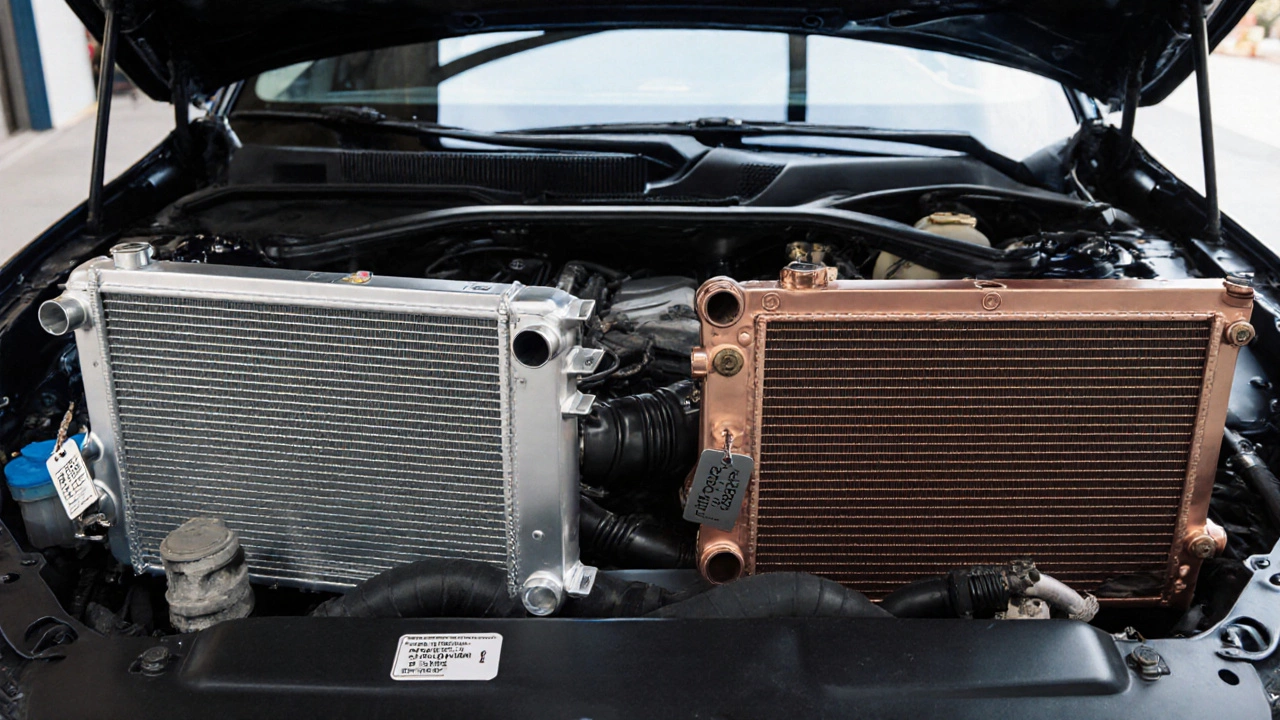Radiator Price: What Determines the Cost of a New Car Radiator?
When you start thinking about radiator price, the first thing you need is a clear definition. radiator price is the amount you pay to purchase or replace a vehicle's heat‑exchanging component. It covers the part itself, any required accessories, and labor. Also known as radiator cost, it varies widely based on a few key factors.
One of the biggest drivers is the radiator, the core part that moves heat from the engine to the coolant. Radiators come in aluminum, copper, or plastic cores, each with a different price tag. An aluminum unit is lightweight and common for everyday cars, while copper offers superior heat transfer but costs more. The choice of material directly impacts the final price you see on a quote.
How the Cooling System Influences Pricing
The cooling system is the network of parts that keep your engine from overheating. It includes the radiator, thermostat, water pump, hoses, and coolant. When you replace a radiator, you often need to inspect or swap other cooling‑system components. If a hose bursts or the thermostat fails, the shop will add those parts and labor to the total, pushing the radiator price higher.
Another key player is vehicle maintenance. Regular maintenance can keep radiator prices down by catching issues early. A well‑maintained system may only need a simple flush and new coolant, avoiding a full replacement. Skipping routine checks, however, can lead to corrosion or leaks that force a pricier, full‑unit swap.
Now, let’s talk about the real‑world numbers you’ll encounter. A budget‑friendly aftermarket aluminum radiator for a compact hatchback can run around £50‑£80, while a premium OEM copper radiator for a sports car often tops £200‑£300. Add labour – typically £70‑£120 per hour – and you’re looking at a total bill that ranges from £150 up to £500 or more, depending on complexity.
Installation method matters too. Some radiators bolt directly onto the engine bay, making a quick swap in under an hour. Others require removal of the fan, shroud, or even the front bumper, extending labour time. When you ask for a quote, check whether the shop includes removal, disposal, and refilling of coolant. Those hidden steps can add £30‑£60 to the final cost.
Brand reputation also plays a role. OEM parts carry the car maker’s name and usually come with a longer warranty, but they’re pricier. Aftermarket brands like Meziere, Behr, or Valeo offer solid performance at a lower price, but warranty coverage may be shorter. Deciding which route to take depends on how long you plan to keep the vehicle and how much risk you’re willing to accept.
Don’t forget about ancillary items that often get bundled into the radiator price. A new pressure cap, coolant temperature sensor, or a set of fresh hoses can easily add £20‑£40. Some shops even recommend a coolant flush with a special chemical treatment, which can be another £30‑£50. When you add up every line item, the total can feel surprising, but understanding each piece helps you control the budget.
If you’re a DIY enthusiast, you can shave off labour costs by doing the swap yourself. The process involves draining the coolant, disconnecting hoses, unbolting the old unit, and installing the new one. You’ll need basic tools, a torque wrench, and a service manual for torque specs. Even seasoned hobbyists recommend a professional pressure test after installation to confirm there are no leaks.
Seasonal timing can affect radiator price as well. During summer months, when overheating complaints spike, shops may charge a premium for urgent service. Conversely, in the off‑season, you might snag a discount or find promotional offers on parts. Keep an eye on local auto‑parts stores and online retailers for sales, especially around major holidays.
Finally, consider the long‑term value of a quality radiator. A well‑chosen unit that matches your engine’s heat load can improve fuel efficiency and extend engine life. Paying a bit more up front for a reliable radiator often saves you from costly engine repairs down the road, making the higher radiator price a smart investment.
Below you’ll find a curated list of articles that walk through the most common radiator questions – from identifying strange noises to understanding how a faulty radiator can affect overall vehicle performance. Use these resources to fine‑tune your budgeting, spot red flags early, and make an informed decision when you shop for a new radiator.

How Much Does a Car Radiator Cost? 2025 Guide
Oct 25 2025 / RadiatorsDiscover how much a car radiator costs in 2025, the factors that affect price, DIY vs professional options, and tips for choosing the right part.
VIEW MORE